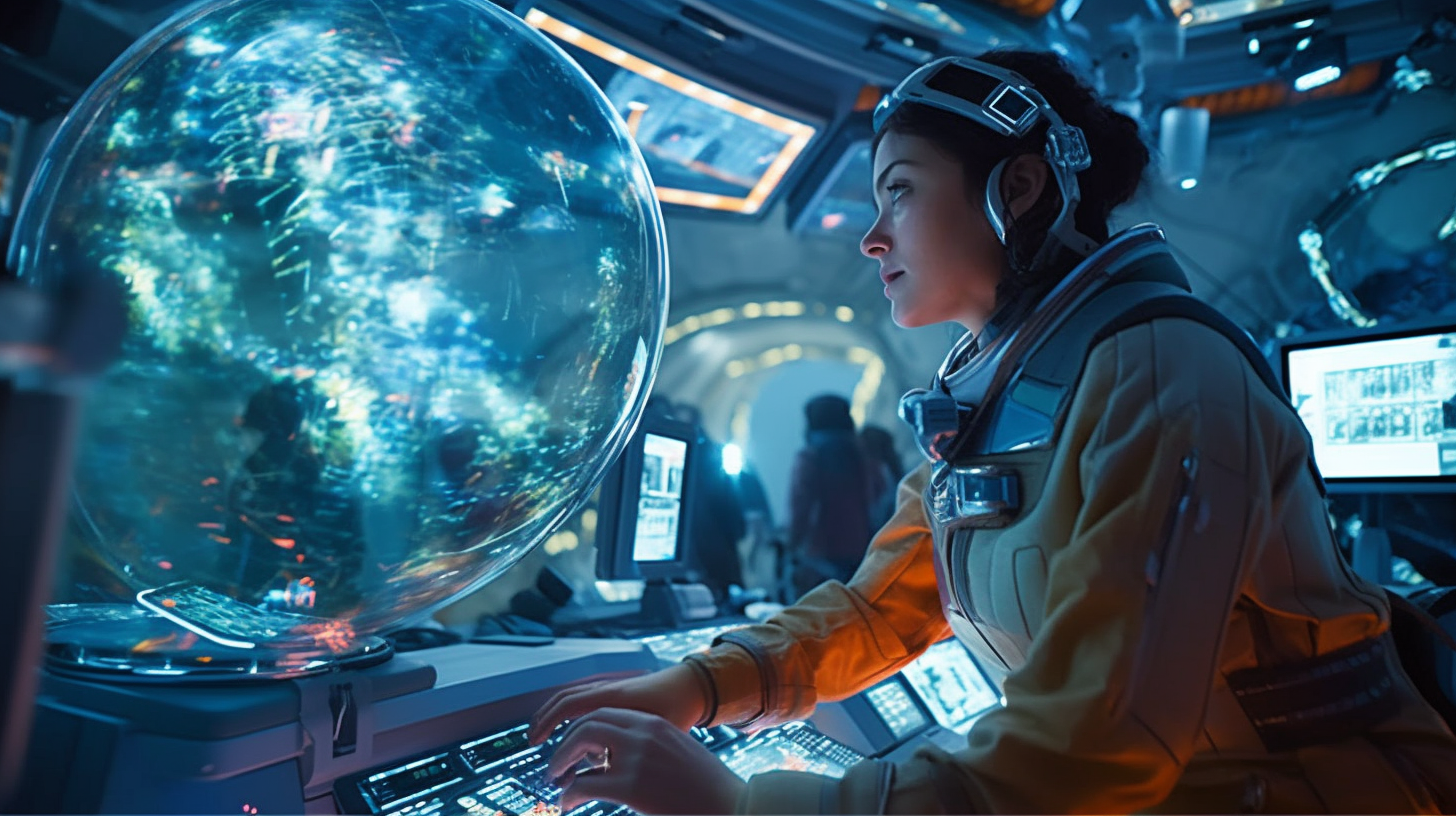Orbital Guardians
A military lieutenant and her team on a space station scramble to safeguard an essential satellite constellation from mysterious payloads launched by CNSA.

I asked GPT-4 to craft a short story, set in 2040, that illustrates the state of strategic space competition between China and the United States and the role that new space companies and AI will play in unlocking this domain to establish an increasingly common human presence and satellite deployments that serve a wide range of commercial, military, and intelligence purposes.
I created the cover image for this post with Midjourney.
"Prometheus, display latest launch trajectories," Lieutenant Sara Ramirez commanded. The AI of the USS Orion, a U.S. military-run space station in low Earth orbit, responded immediately.
A web of trajectories bloomed in the holographic display, lines crisscrossing like an intricate spider web against the backdrop of Earth. It was a grand ballet of launches from SpaceX, Blue Origin, and Rocket Lab, interspersed with those from CNSA and iSpace.
Sara scrutinized the data, her gaze sharp, trained. Then a ping sounded, breaking her focus. "Alert: Anomaly Detected," Prometheus intoned.
"Detail the anomaly, Prometheus," Sara instructed. The AI complied, narrating the situation in its calm baritone.
"We're detecting irregularities in recent CNSA launches, suggesting possible undisclosed payloads. These could potentially intersect with the Altaire constellation's orbital path."
Sara felt a ripple of concern. The Altaire constellation, a newer cluster part of a third party's Earth-imaging system, had been deployed by Rocket Lab's Neutron rocket. "Initiate a cross-reference, Prometheus. I want to understand the potential risk here."
"Processing request, Sara," Prometheus replied. Sara's fingers traced the holographic lines of the CNSA launch, trying to anticipate its possible impact.
As Sara and Prometheus worked together, they found that the CNSA's recent launch closely aligned with the orbital path of the Altaire satellite cluster. Prometheus provided the detailed stats of the cluster.
"Sara, the CNSA's trajectory crosses paths with the Altaire imaging constellation. The proximity is notable and potentially concerning," Prometheus reported.
Sara nodded, acknowledging the gravity of the situation. "Could it be a coincidence, Prometheus?"
The AI paused, considering the query. "It's possible," it eventually admitted, "but the precision suggests intentionality."
As the hours passed, the silence of the station was punctuated only by the steady hum of Prometheus and the constant flow of data on her console. Their analysis revealed the CNSA payload was not a single satellite, but a swarm of smaller ones, each capable of independent movement and with advanced onboard AI.
"Prometheus," she called out, "Initiate an in-depth analysis of these smaller units. I want to understand their potential functionality and threat level."
"Working on it, Sara," the AI responded. As Prometheus worked, Sara continued her assessment, monitoring the CNSA satellites as they steadily approached the Altaire constellation.
Finally, Prometheus shared its findings. "Sara, I believe these smaller units are potentially capable of interfering with the Altaire satellites. They could disrupt communication, block imaging, or even physically collide with them."
Sara felt a chill run down her spine. "So, they could be weaponized?"
"In theory, yes," Prometheus confirmed, "Although there's no direct evidence to support that yet."
In the midst of this high-stakes scenario, Sara wasn't alone. Lieutenant Mark Jacobs, a colleague and fellow space strategist, worked alongside her, offering insights and collaborating on the crisis response. Their interactions provided a human element to the intensive data analysis, an important balance to the AI-driven approach.
Both of them were accustomed to pressure, but the gravity of the situation gave their work a newfound intensity. Sara found herself appreciating Mark's calm demeanor and sharp mind, his ability to see patterns where she sometimes saw chaos. Their collaborative approach, combined with Prometheus' advanced computational abilities, created a well-rounded strategy team.
As the hours rolled on, Sara and Mark worked tirelessly, their discussions and debates filling the silence of the station. They strategized, adjusted the orbital paths of the Altaire satellites, and prepared for the worst. Meanwhile, Prometheus calculated probabilities, simulated outcomes, and produced detailed reports.
Watching the sunrise over the Pacific, Sara felt the magnitude of their responsibility. Their efforts, combined with the powerful computational abilities of Prometheus, were playing a critical role in a global chess game, the outcome of which held implications far beyond the station's metallic walls. The Altaire constellation, with its potential for high-resolution Earth imaging, was more than just a collection of satellites. It was an asset of global significance.
Pausing her work to take in the stunning vista below, Sara was filled with a renewed sense of purpose. The challenges they faced were immense, but they were ready. Every launch, every satellite, every trajectory, they were all part of a larger picture. A picture that was not just about exploration, but also about protection. The stars were not only for dreamers, but for defenders too. And Sara, along with Mark and Prometheus, stood ready to face whatever the new day brought.
Blogs of War generated this text in part with GPT-4, OpenAI’s large-scale language-generation model. Upon generating draft language, the author reviewed, edited, and revised the language to their own liking and takes ultimate responsibility for the content of this publication.
